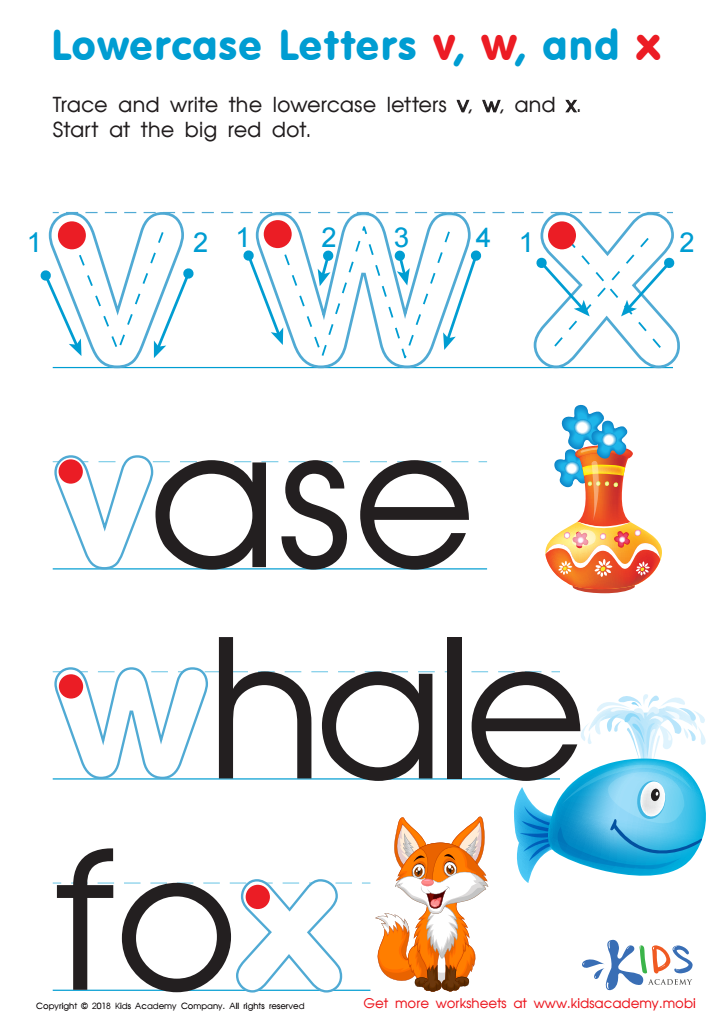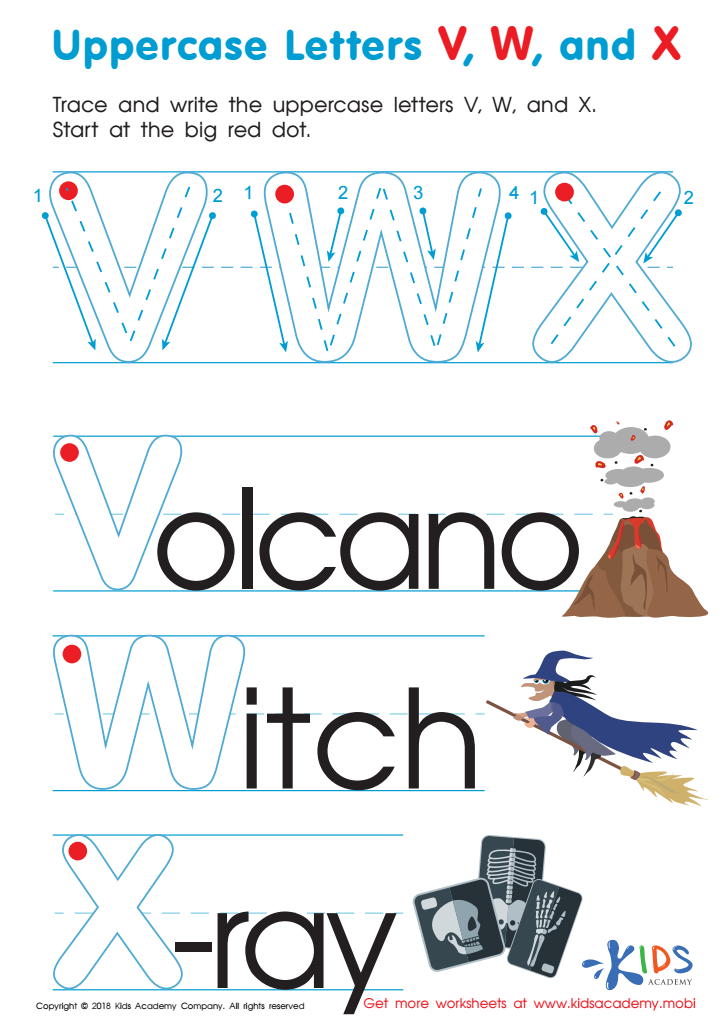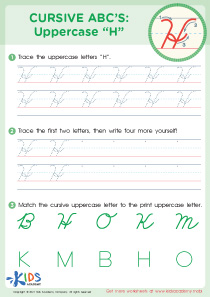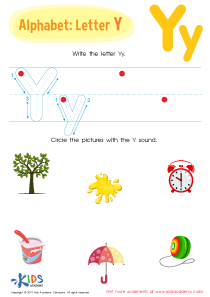Upper & Lowercase Letters Worksheets for Ages 5-7 - Page 3
50 filtered results
-
From - To


Lowercase Letters v w x Worksheet


Uppercase Letters V, W, and X Worksheet
Understanding upper and lowercase letters is fundamental for children aged 5-7 as it lays the groundwork for reading and writing proficiency. During these early years, children are at a prime developmental stage to grasp the alphabet, which is key in building their literacy skills.
Firstly, recognizing both forms of letters enhances phonemic awareness, as children learn that 'A' and 'a' represent the same sound and concept but are used differently in writing. This dual recognition supports learning word boundaries and sentence structure, aiding in clearer reading and comprehending text.
Secondly, mastering uppercase letters can support the development of fine motor skills. These letters often have simpler, straight-line shapes that can be easier for young children to write initially. As they gain confidence and control, they can move on to the more intricate, varied shapes of lowercase letters, fostering continued handwriting development.
Lastly, consistency in recognizing and using both cases is crucial for effective communication. Understanding when to use uppercase—for beginning sentences, proper nouns, and emphasis—ensures children follow conventions that make writing clear and comprehensible for readers.
Overall, focusing on the correct use of upper and lowercase letters provides children with essential tools for literacy that will support their educational journey and ensure clear and proper communication.

 Assign to the classroom
Assign to the classroom








